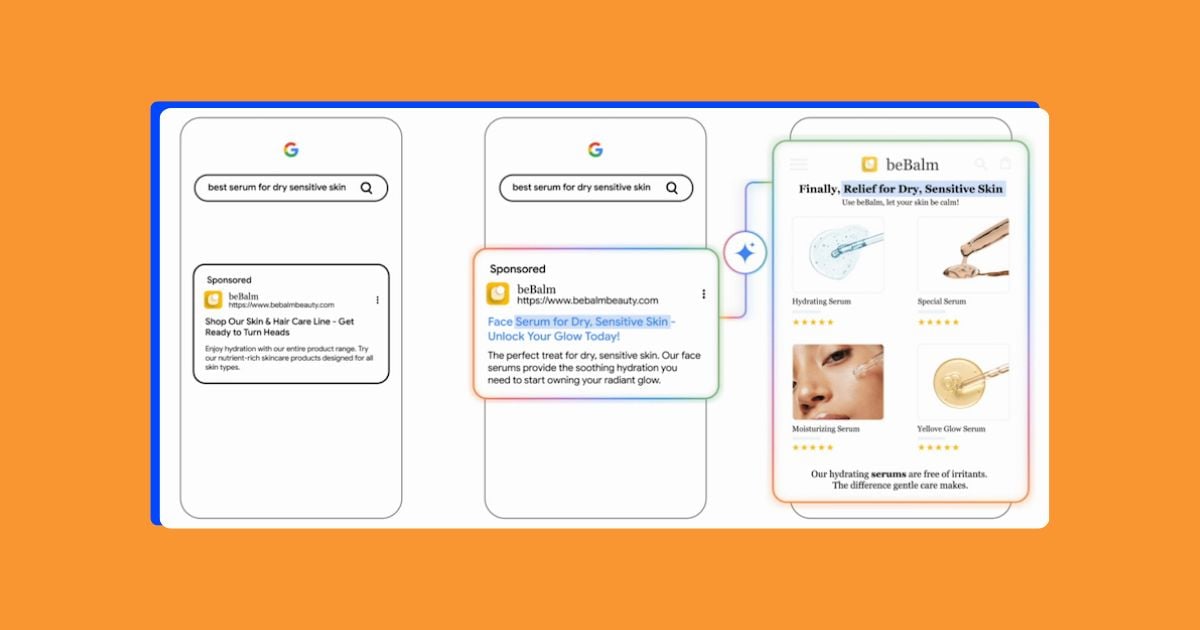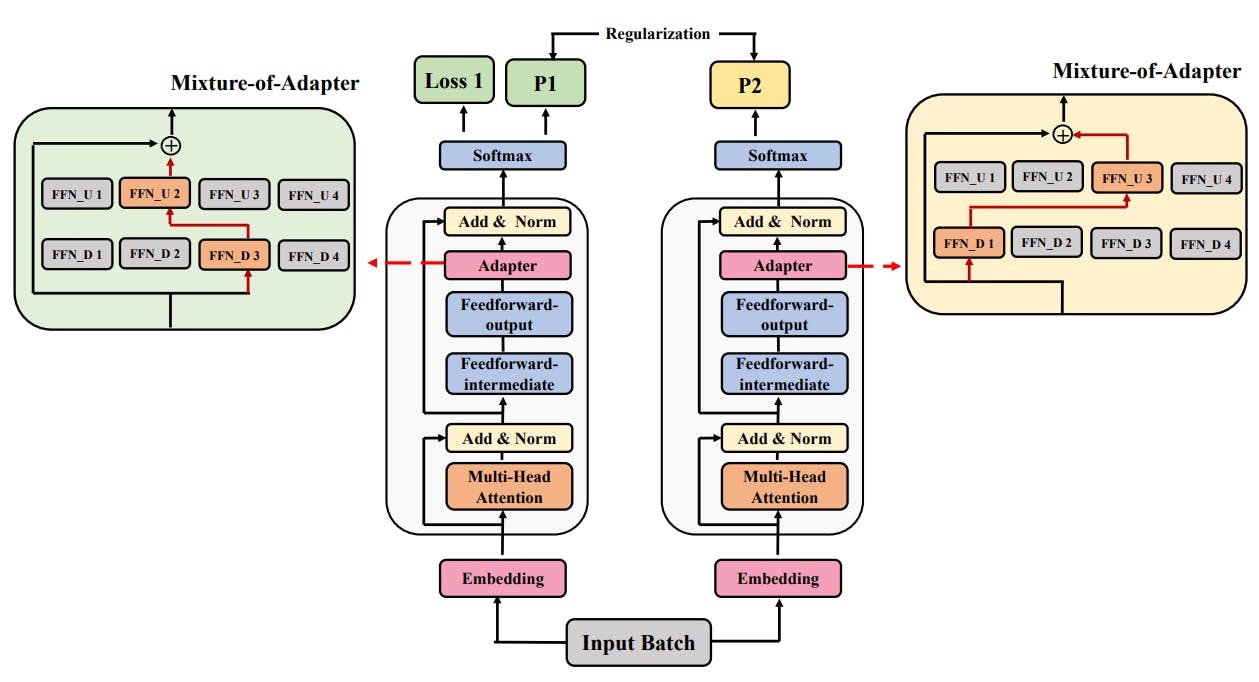If you’ve been paying attention to the Google Ads landscape over the past couple of months, you’ve likely heard of the release of AI Max for Search. I’ve heard from many advertisers that they’re worried that Google is messing with Search campaigns, but I think those worries are a bit premature.
In this article, I want to talk about what AI Max for Search is (and some of what it isn’t) and talk about when it might make sense to test in your account.
Contents
What is AI Max for Search?
First, let’s get something out of the way: AI Max is NOT a replacement for Search campaigns.
So, let’s talk about what AI Max is and how it will work.
AI Max is a new set of optional features you can enable with your Search campaigns in Google Ads to help with targeting and creative assets.
New features for AI Max
Here’s a quick rundown of the new features available within AI Max:
Search term matching
This is a new form of keywordless targeting that combines a few different features. It uses Broad match (i.e., the Broad match campaign setting) plus keywordless matching that uses signals from keywords, assets, and landing pages.
From what I can tell, when it comes to keyword prioritization, AI Max will fall in line with the existing hierarchy in one of two ways.

If your ad is triggered for a search term based on the Broad match setting, that will fall into the level of the list alongside Phrase match and Search themes for PMax. If your ad is triggered with the keywordless matching option, i.e., the search term was determined by your keywords, assets, or landing pages, then it will fall into the last row where only Ad Rank serves to determine prioritization.
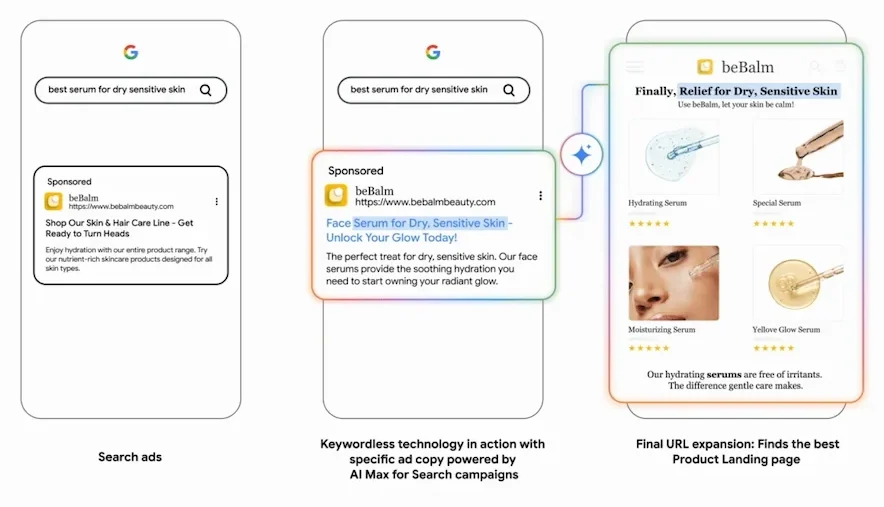
🛑 Worried you’re wasting spend in Google Ads? Find out with a free, instant audit >> Google Ads Performance Grader
Updates to reporting
Since AI Max gets to choose search queries, keywords, landing pages, and assets for you, each of those reports will now have a portion that shows when AI Max selected them. Within search terms, you will also be able to see if the query was selected based on Broad match expansion or keywordless matching.
Not-so-new features in AI Max
There are some features in the AI Max for Search announcements that are effectively just carryovers from what’s usable in regular Search or Dynamic Search Ads (DSA) campaigns currently.
Brand settings
With AI Max for Search, you’ll still be able to utilize Brand Inclusion and Exclusion lists just as you do with regular Search campaigns.
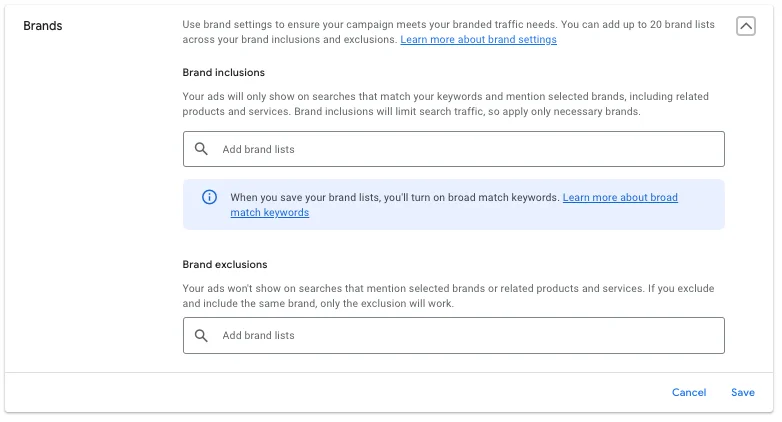
URL rules
Just like with Dynamic Search Ads campaigns, you’ll be able to control which URLs your ads are eligible to use with inclusions and exclusions. Advertisers will also be able to utilize Page Feeds, as well, if that’s a simpler option than having two separate inclusion-exclusion lists.

Text customization
This feature is new to Search, but exists in Performance Max campaigns. With Text Customization, Google will use text from your existing ads, landing pages, and assets along with generative AI to create a customized ad copy that’s relevant to your user’s query.
🛠️ Get the tools and tips you need to build the perfect landing page in our free guide >> How to Make Great Landing Pages (with Crazy-High Conversion)
Final URL expansion
Also, available in PMax campaigns, Final URL Expansion lets Google choose a more specific page from your site as the landing page for your ad if it believes it’s more relevant than the landing page you selected. This requires Text Customization to be turned on.
Locations of interest
These controls will be able to be adjusted at the ad group level to include people based on either their location, Presence or their Presence or Interest in a given location. The key difference here is the control at the ad group level rather than the campaign level as with existing Search campaigns.

Many other features, like negative keywords and location exclusions, will still apply to your AI Max campaigns just like they do for regular Search.
A note about AI Max options
One thing I want to stress about AI Max in its current form is its optionality. There are LOTS of features within this new set that you can pick and choose à la carte to apply or not apply as you wish. Each of the options listed below are features that can be opted into or out of based on your preferences:
- Keywordless Targeting
- Text Customization
- Final URL Expansion (must have Text Customization enabled to use this)
- Location of Interest
- AI Max: You can toggle this on or off at your discretion
Key takeaway: You still have lots of control, even when ceding some control to Google.
Requirements for AI Max
There are just a couple of requirements for you to use AI Max.
First, your campaign type must (obviously) be a Search campaign. If you want to use Google’s AI features with other campaign types, there are plenty of others to choose from.
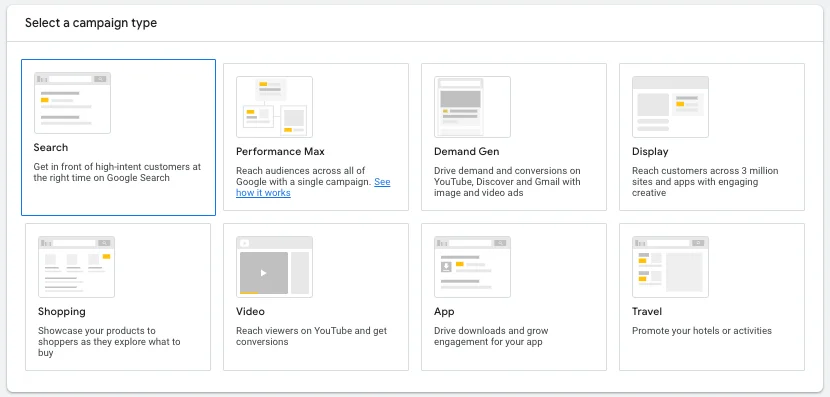
Second, you must be using Smart Bidding strategies focused on conversions. This means Max Conversions or Max Conversion Value are eligible, as well as their augmented styles of tCPA and tROAS, respectively. No other bid strategies are supported at this time.

🚨 What results can you expect from Google Ads? Download our latest Google Ads Benchmarks to find out!
When not to use AI Max
While some of these features are really just a different packaging for options that are already available in Google Ads, there are some scenarios where I wouldn’t recommend using AI Max for Search.
- Poor website: Just like with DSA campaigns, if your website isn’t a strong representation of your company, AI Max for Search might not be a great idea if you leave the Text Customization and Final URL expansion on.
- Regulation-heavy industry: Just like with other automated features in Google Ads, if you need to have strict messaging in ads based on regulatory compliance, AI Max might not be a great option.
- Low conversion volume: Although Google touts its Smart Bidding as being able to generate results without much history, I’ve personally never found success with that. I’d always suggest following the 30/30 rule, meaning at least 30 conversions in the last 30 days, with 50 conversions in the last 30 days being an even better threshold to meet.
- Lead quality considerations: Lead generation is always a tough route with Google Ads automation. The platform is really good at getting leads, but generating quality leads can be a challenge. If you have high thresholds to hit for quality, AI Max could still be an okay option, but will likely need to take a backseat to classic Search. Speaking of…
When to try AI Max for Search
For now, I’m thinking of AI Max for Search as a combination of Performance Max and Dynamic Search Ads. The biggest common factor in those campaigns: they’re here to drive incremental volume outside of my reach with my existing Search campaigns.
What does all this mean for me? I’m still going to build out a robust, old-school Search strategy that leverages Exact match terms just like I have for the last 15 years and manage it as usual. Given the prioritization schedule above, Exact match still outranks everything else, and since that’s where I’ll have the most control, that’s where I’m going to start.
Beyond that, I’ll leverage AI Max as an expansion tool, just like I would for DSA. If anything, AI Max, in my mind, just translates to a slightly more AI-centered Dynamic Search Ads strategy. It functions relatively the same, but just has a few more bells and whistles.
TL;DR: If you’re a fan of classic Search paired with Dynamic Search Ads for extra reach, then AI Max for Search might be your new favorite tool.
How to get started with AI Max for Search
AI Max for Search started its rollout as of early 2025 but is going to take until Q3 of 2025 to be fully available to all accounts. If you want to test this campaign type, you’ll have to wait for it to hit your account.
Once the feature is available for you, there will be an option to use Google Ads Campaign Experiments to test AI Max for Search before jumping in full force. It’s not clear at this time exactly what the logistics of that setup will be, but there will be some functionality around it.
Is AI Max for Search right for you right now?
Google is continuing to roll out new features powered by AI to help advertisers find their target audience. If you’re a classic marketer like me, this might be a nice addition to what you already have running. If you’re new to marketing and Search in general, this might be an easy option for you to get things started and see results.
Just like all other new features, I don’t think AI Max is for everyone, and it certainly can be a slippery slope for advertisers who aren’t sure what they’re doing, but it also could be a great option for folks who have maxed out traditional search and need to see incremental results.

